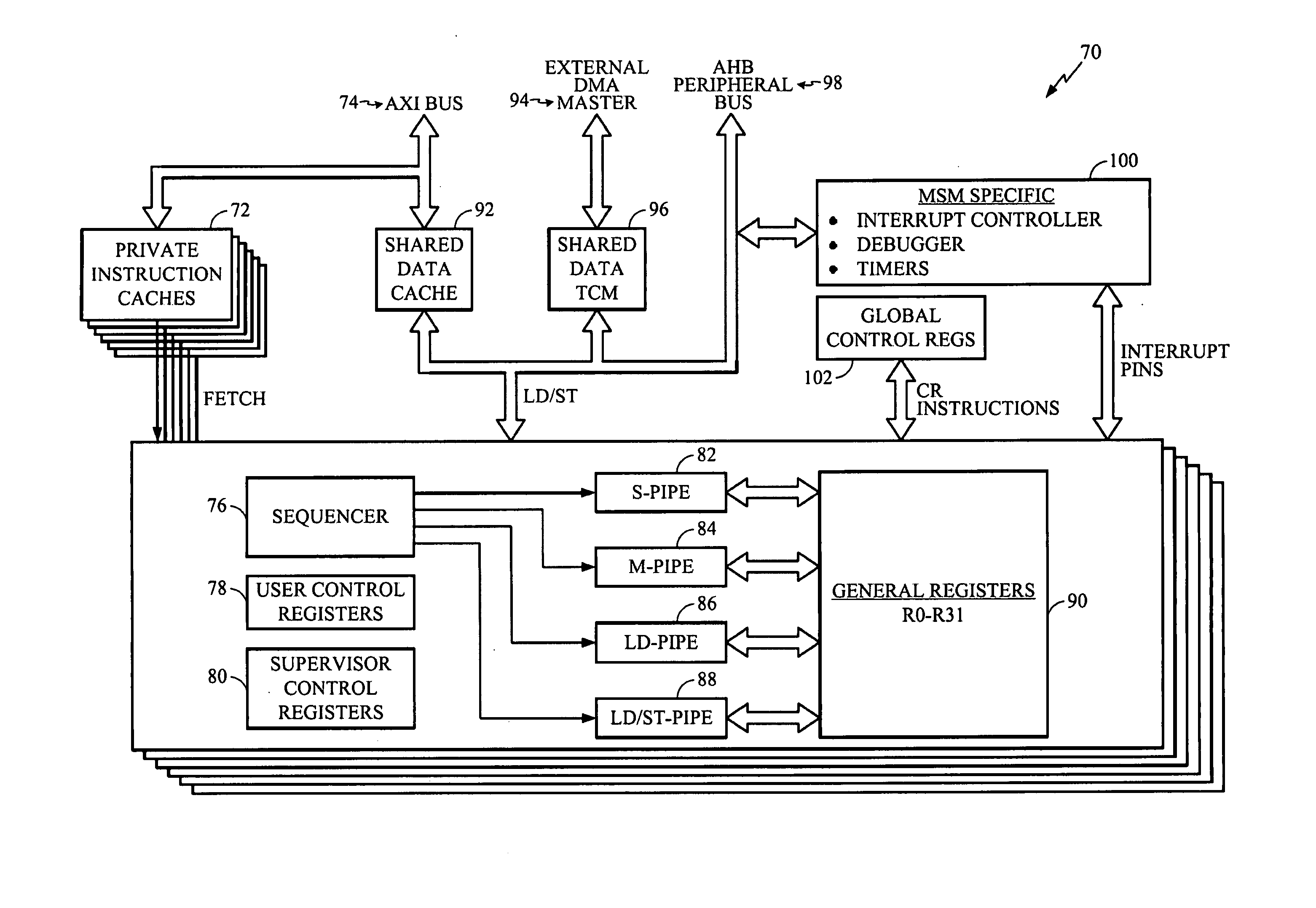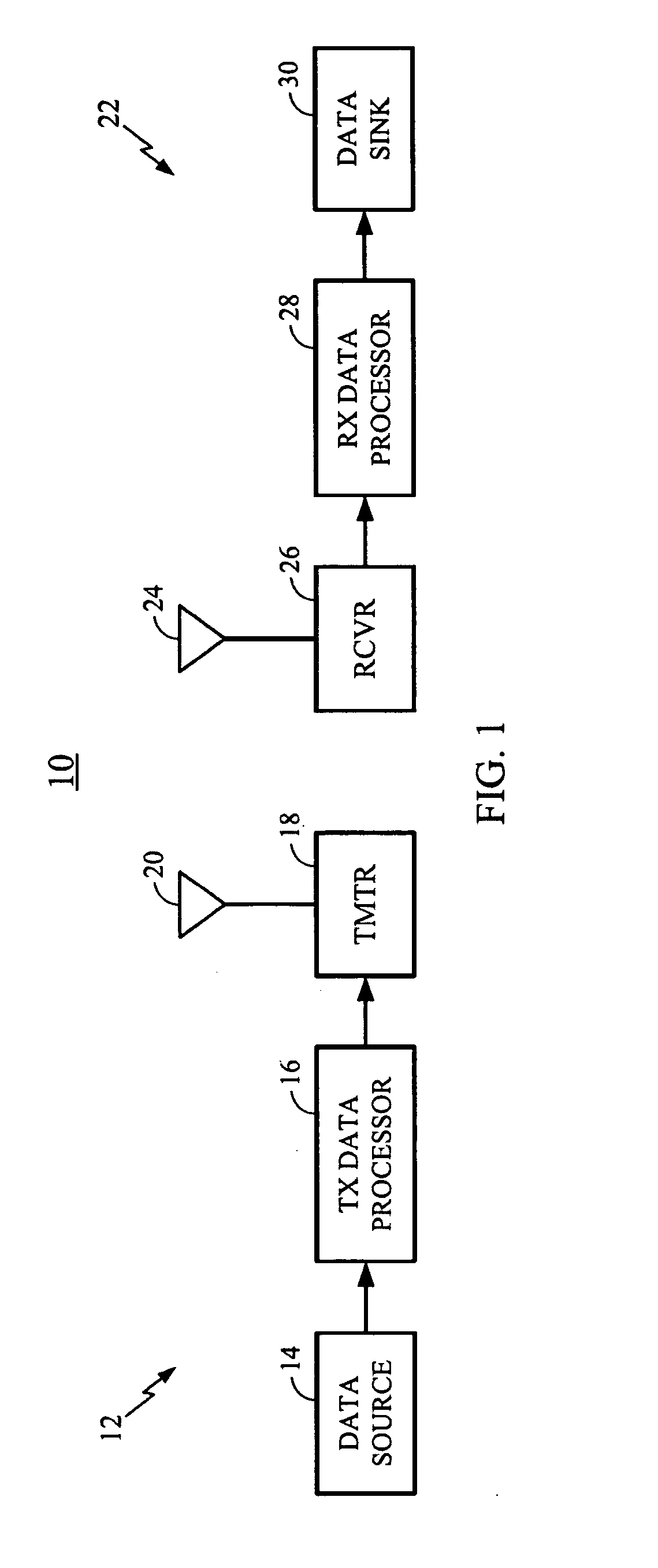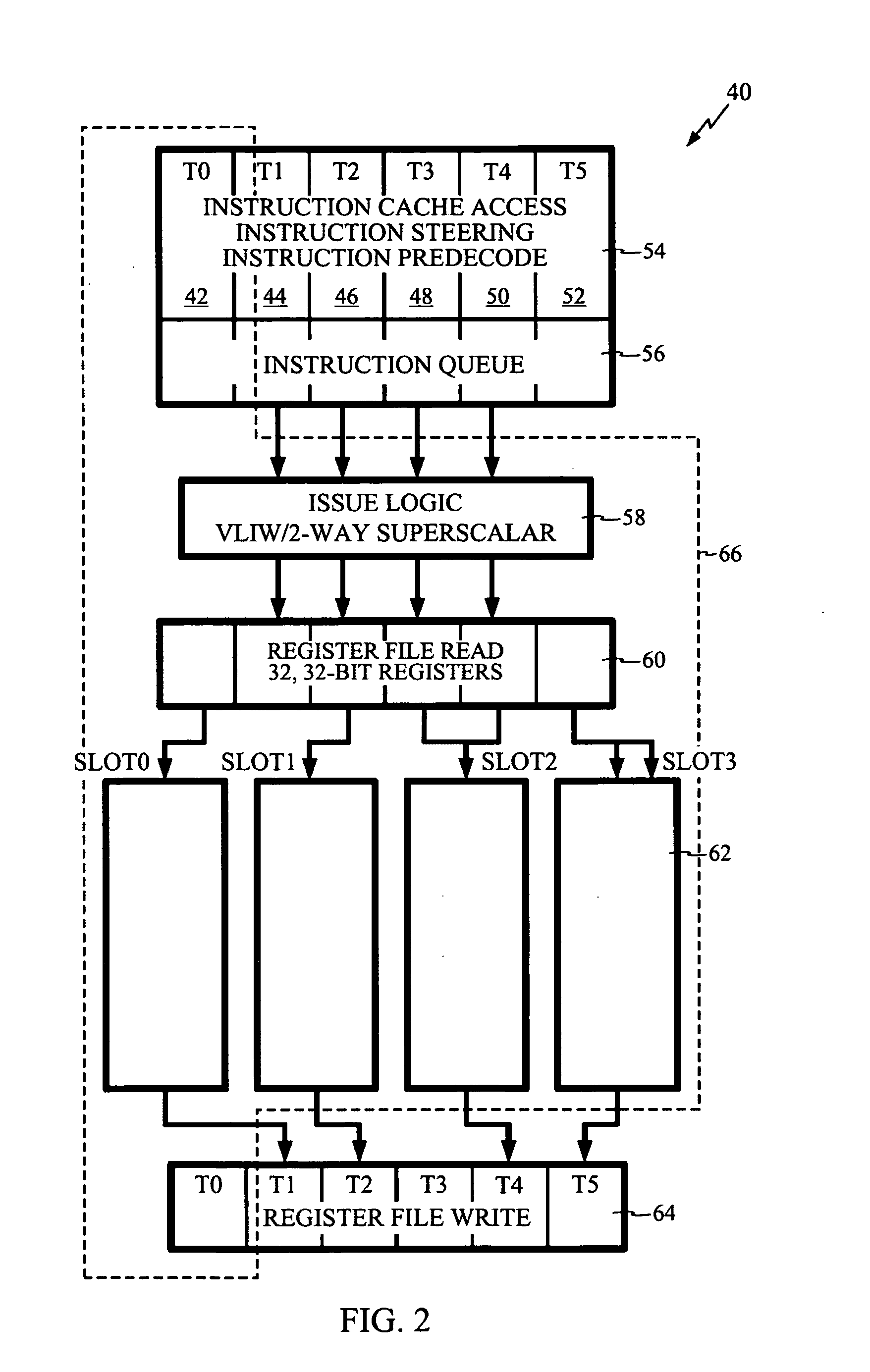Booth multiplier with enhanced reduction tree circuitry
a multiplier and tree circuit technology, applied in the field of math processors, can solve the problems of inability to efficiently generate (ab) and repetitive algorithms, and achieve the effect of reducing delay, power and hardwar
- Summary
- Abstract
- Description
- Claims
- Application Information
AI Technical Summary
Benefits of technology
Problems solved by technology
Method used
Image
Examples
Embodiment Construction
[0025] The disclosed subject matter for the modified Booth multiplier here presented has use in a very wide variety of digital signal processing applications, including those involving multi-threaded processing. One such application appears in telecommunications and, in particular, in wireless handsets that employ one or more digital signal processing circuits. Consequently, the following FIGS. 1 through 3 describe a telecommunications DSP within which the present teachings may be useful. FIG. 4 sets forth a data path for multiplication processing within which the present disclosure of an enhanced Booth multiplication operation may operate. Remember, however, that the implementation here described provides but one of a virtually limitless set of applications to which the disclosed subject matter may apply.
[0026] For the purpose of explaining how such a wireless handset may be used, FIG. 1 provides a simplified block diagram of a communications system 10 that can implement the prese...
PUM
 Login to View More
Login to View More Abstract
Description
Claims
Application Information
 Login to View More
Login to View More - R&D
- Intellectual Property
- Life Sciences
- Materials
- Tech Scout
- Unparalleled Data Quality
- Higher Quality Content
- 60% Fewer Hallucinations
Browse by: Latest US Patents, China's latest patents, Technical Efficacy Thesaurus, Application Domain, Technology Topic, Popular Technical Reports.
© 2025 PatSnap. All rights reserved.Legal|Privacy policy|Modern Slavery Act Transparency Statement|Sitemap|About US| Contact US: help@patsnap.com



